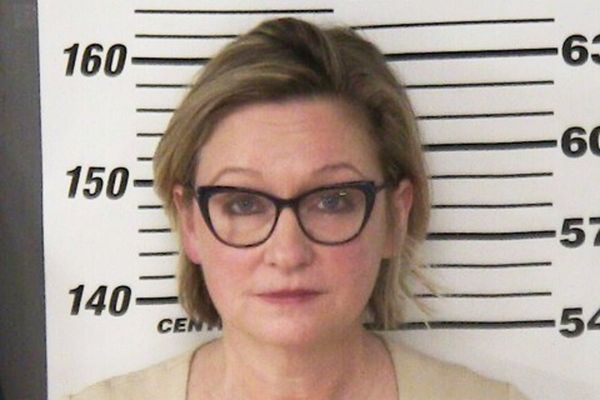A MAJOR complex of “monumental” Neolithic buildings unearthed in Orkney over the past two decades will start to be permanently covered up from this week as Scotland says goodbye – at least for now - to a discovery “without parallel” in north west Europe.
The Ness of Brodgar - lying between the Ring of Brodgar and the Stones of Stenness in the Heart of Neolithic Orkney World Heritage Site – has been under excavation since 2004 with archaeologists gradually uncovering an epic stretch of buildings dating from around 3500 to 2300BC.
Dig director Professor Nick Card said over the last 20 years experts have been able to find “almost every type of Neolithic artefact you could ever dream of”, including more than 1200 examples of Neolithic art, beautifully polished mace heads and axes, as well as the structures themselves, which archaeologists have regarded as major feats of engineering for their time.
But over the coming weeks, the three-hectare site will begin to be filled in so it can be protected for generations to come.
To mark the end of the excavation, well-known Time Team geophysicist John Gater – who was contracted to do the original geophysics survey at the Ness 20 years ago – has returned to the site to do some filming for the programme which now has a YouTube channel.
It is expected there will be a special documentary programme or mini-series released next year on what has been found at the Ness.
The discovery began a few years after the designation of the World Heritage Site. The local archaeological trust and the Archaeology Institute at the University of the Highlands and Islands (UHI) wanted to put the known historical sites into a wider context and so employed geophysics to further understand what might lie beneath the surface of the Ness.
Card told the Sunday National: “There’s a saying in Orkney that if you scratch the surface it bleeds archaeology and the geophysics just confirmed that.”

Surveys showed that the two fields which have now been excavated were plastered in anomalies of all shapes and sizes, indicating the possible presence of ancient material.
“The chance discovery that was the catalyst to the excavation starting was a big slab was pulled up by the plough and investigations showed it was not a Bronze Age cist or stone coffin as we expected, but revealed the top of one of the structures,” said Card.
“We started off small scale for the first few seasons to get a handle on the nature of the site and from there was a realisation we were looking at something quite extraordinary, a huge depth of archaeology which has subsequently been shown to span the whole of the Neolithic period.”
One of the most fascinating facts the excavation has shown is that Neolithic life was far from simplistic, with tonnes of stones coming from right the way across Orkney.
The sophistication of people back then has been further emphasised by the discovery last week that the Altar Stone at the heart of Stonehenge is in fact Scottish and not Welsh.
Card said: “The organisation of Neolithic society has been illuminated at many different levels.”
People have come from as far afield as New Zealand and Australia to see the wonder of the Ness, with an average of around 20,000 visitors coming for each seven to eight-week season every year before the site was covered up for the winter months.
Card explained how he had gone over to the US to do lectures about the excavation expecting to speak to a handful of people, only to end up telling the tale of the Ness in huge auditoriums of more than 1000 students.
Against some of the advice from the tourism industry, the team at the Ness have been hosting guided tours of the site that have lasted up to an hour and a half, with visitors completely gripped by the site of archaeology in action and seeing such well-preserved artefacts.
“Our free guided tours last about an hour to an hour and a half which is contrary to what we were advised to do,” said Card.
“People said we shouldn’t do anything longer than 15 minutes or we’ll lose the public’s attention. We’ve proved them wrong.
“We find some of our tour guides are still there half an hour after, just answering questions. It’s also the quality of the tour guides we have, they’re all archaeologists involved in the Ness team and part of their job is not just digging but to take people around. The people in the trenches are very approachable too so people ask questions of people they see digging.
“The reaction of the public is just a joy to behold. Most people will leave with the same sense of awe and wonder that, as archaeologists, we have.”
There has been something new found almost every day at the Ness and Card hopes that in generations to come other artefacts will be found given just 10% of the entire site has been excavated.
Many have asked questions about why it can’t be left open or covered up in a way that would still allow people to see it.
Given the Ness largely consists of quarried stone rather than the resilient beach stone at Skara Brae, if the complex were left open to the elements, it would become unrecognisable in a couple of years.
Card said the cost of building a structure over it would also be astronomical and the question of where you would place the foundations would be a never-ending problem given the ground is covered in archaeology.
However, there will still be many ways to find out about what has come from the excavation, with the local Orkney Museum’s biggest-ever exhibition displaying some of the greatest finds.
Though the feeling must be bittersweet, Card explained why it is the right time to bring the excavation to an end.
He said: “We’ve recovered hundreds of thousands of strands of evidence and it’s one of the reasons we’re stopping this year because we have to continue with the post-excavation analysis and dovetail all of this together into a coherent narrative of the site, and that will take us several years and then we’ll probably publish it all in many academic papers.
“Technology has also come on so quickly over the last 20 years that no doubt the next generation of archaeologists - if anyone wants to come back and reinvestigate what we’ve discovered or open up new areas of the site - will have a better battery of techniques they can bring to bear on it.
“Although the field work ends this year, the project continues. We’ll still keep up with our outreach, sharing the results of everything that we do.”
To keep up with the analysis of artefacts and donate to the Ness of Brodgar Trust, visit the website here.







